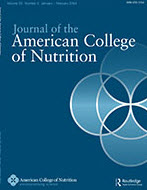Welcome to Whey Protein Meta-Analysis Information Site
 A meta-analysis, published in the March/April 2014 issue of the Journal of the American College of Nutrition titled, “The Effects of Whey Protein on Body Composition: A Meta-Analysis of Randomized Controlled Trials” finds that the current body of literature supports the use of whey protein to improve body composition, either as a supplement combined with resistance exercise or as part of a weight-loss or weight-maintenance diet.
A meta-analysis, published in the March/April 2014 issue of the Journal of the American College of Nutrition titled, “The Effects of Whey Protein on Body Composition: A Meta-Analysis of Randomized Controlled Trials” finds that the current body of literature supports the use of whey protein to improve body composition, either as a supplement combined with resistance exercise or as part of a weight-loss or weight-maintenance diet.
Learn more about the growing body of research on the benefits of whey protein with educational tools and resources that make up “The Whey to Help Achieve Better Body Composition” toolkit. Check it out here.
Abstract
Objectives: The objective of the present meta-analysis was to examine the effect of whey protein (WP), with or without resistance exercise, on body weight and body composition in randomized controlled trials (RCTs) conducted in generally healthy adult study populations.
Methods: A comprehensive literature search was conducted to identify RCTs that investigated WP (concentrate, isolate, or hydrolystate) and body weight, body mass index (BMI), body fat, lean body mass (LBM), fat-free mass (FFM), and waist circumference. Random effects meta analyses were conducted to generate weighted group mean differences (WGMD) for between group comparisons (WP vs. other protein sources or carbohydrates) and within-WP group comparisons (i.e., differences from baseline to trial end). Studies were classified into two distinct groups—WP as a supplement without dietary modification (WPS) and WP as a replacement for other sources of calories (WPR)—and were meta-analyzed separately. Subgroup analyses included examining the effect of resistance exercise and type of WP on the relationship between WP and body composition.
Results: Fourteen RCTs were included, with a total of 626 adult study completers. Five studies examined the effects of WPR whereas the remaining nine studies examined the effects of WPS. Body weight (WGMD: -4.20kg, 95% CI: -7.67, -0.73) and body fat (WGMD: -3.74kg, 95% CI: - 5.98, -1.50) were significantly decreased from baseline in the WPR within-group analyses. In the between-group analyses, the effects of WP were more favorable when compared with carbohydrates than protein sources other than whey, although findings did not reach statistical significance. Results from the subgroup analyses indicated a statistically significant increase in LBM (WGMD: 2.24 kg, 95% CI: 0.66, 3.81) among studies that included a resistance exercise component along with WP provision.